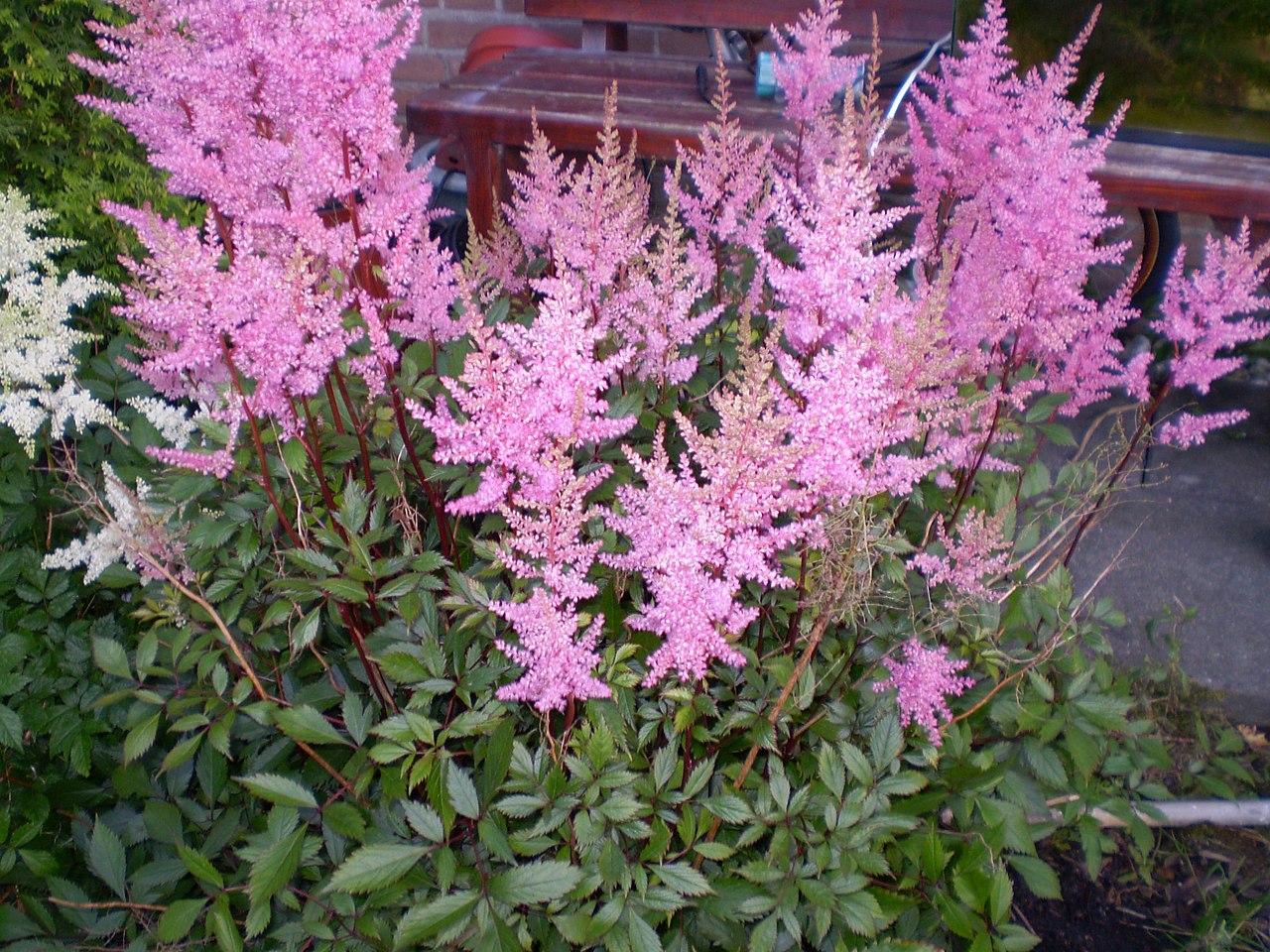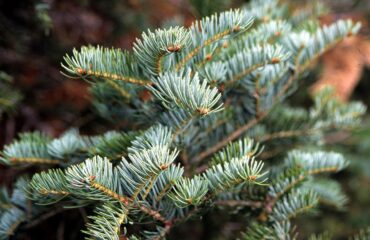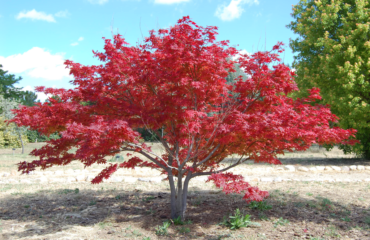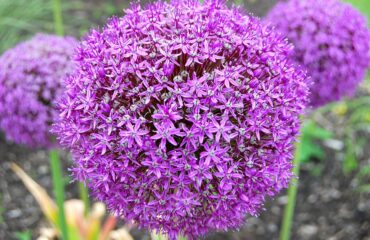Astilbe japonica, commonly known as Japanese Astilbe, is a perennial plant native to Japan and East Asia. It is prized for its beautiful, feathery plumes of flowers that come in shades of pink, white, red, and lavender, blooming in late spring to early summer. The plant’s finely divided, fern-like foliage adds texture and interest to shaded garden areas. Japanese Astilbe is often used in borders, woodland gardens, and as a ground cover in moist, shaded environments.
Preferred Growing Conditions:
- Soil Type: Prefers moist, well-drained soil rich in organic matter; thrives in slightly acidic to neutral pH.
- Sunlight: Grows best in partial to full shade; can tolerate some morning sun but prefers cooler, shaded spots.
- Temperature: Hardy in USDA zones 4-8; prefers cool to moderate climates and may need extra moisture in warmer zones.
- Water Needs: High; requires consistent moisture, especially during the growing season and in dry periods.
Astilbe Japonica (Japanese Astilbe) Propagation Methods:
1. Division:
Division is the most common and effective method for propagating Astilbe japonica. It helps maintain plant vigor and provides an opportunity to expand the garden with identical plants.
- Timing:
- The best time for division is in early spring before new growth begins or in early autumn after flowering has finished.
- Method:
- Carefully dig up the entire clump of the plant, ensuring to dig wide and deep to capture as much of the root system as possible.
- Shake off excess soil to expose the root system and the crown of the plant.
- Use a sharp knife or garden spade to divide the clump into smaller sections, ensuring each division has several healthy shoots and a good portion of roots.
- Remove any dead or damaged roots and trim back old foliage.
- Replanting:
- Replant the divisions immediately in prepared soil that is rich in organic matter and retains moisture well.
- Plant at the same depth as the original clump, spacing divisions 12-18 inches apart to allow room for growth.
- Water thoroughly to settle the soil around the roots.
- Care After Division:
- Keep the newly planted divisions well-watered as they establish.
- Mulch around the base to retain soil moisture and regulate temperature.
- Protect from strong winds and harsh sunlight during the initial recovery period.
2. Seed Propagation:
Growing Astilbe japonica from seeds is possible, though less common due to the long germination period and the variability of seedlings. This method is often used for developing new cultivars.
- Seed Collection and Preparation:
- Collect seeds from mature flower heads once the seed pods have dried and turned brown.
- Gently shake the seed heads to release the tiny, dust-like seeds.
- Clean and dry the seeds for a few days before planting.
- Sowing Techniques:
- Fill seed trays or small pots with a light, well-draining seed-starting mix.
- Sow the seeds on the surface of the soil and lightly press them in without covering, as they require light for germination.
- Mist the surface lightly and cover with a clear plastic lid or plastic wrap to maintain humidity.
- Place the trays in a bright location with temperatures around 65-70°F (18-21°C).
- Germination Requirements:
- Seeds typically germinate within 4-6 weeks under optimal conditions.
- Once seedlings emerge, remove the cover to provide better air circulation.
- Keep the soil slightly moist and provide bright, indirect light to prevent the seedlings from becoming leggy.
- Transplant seedlings into individual pots when they are large enough to handle and have developed a few true leaves.
3. Root Cuttings:
Propagating Astilbe japonica from root cuttings is a viable method, especially useful when you want to produce multiple plants from a single root system.
- Timing:
- Best done in late winter or early spring when the plant is dormant.
- Preparation:
- Dig up the plant and clean the roots.
- Select thick, healthy roots and cut them into 2-3 inch sections.
- Allow the cut surfaces to dry and callous over for a few hours before planting.
- Planting:
- Plant the root cuttings horizontally in pots filled with a light, well-draining potting mix.
- Cover lightly with soil and water to settle the soil.
- Place the pots in a cool, shaded area.
- Rooting and Growth:
- Roots will begin to develop over several weeks, and new shoots should appear in spring.
- Once new growth is visible, gradually acclimate the plants to normal growing conditions.
4. Tissue Culture:
Tissue culture is an advanced propagation method used mainly in commercial settings to produce large numbers of uniform plants quickly. This method involves growing plant tissues in a sterile, controlled environment.
- Process:
- Small pieces of plant tissue, typically from the growing tips or meristem, are sterilized and placed in a nutrient-rich, sterile medium.
- Under controlled conditions, the tissue forms a callus, which then differentiates into shoots and roots.
- Once the plantlets are large enough, they are transferred to soil or a suitable growing medium to acclimate to normal growing conditions.
- Advantages:
- Produces a large number of uniform plants quickly.
- Can propagate disease-free plants and maintain rare or desired characteristics.
Care for Newly Propagated Plants:
- Place new plants in a shaded location with well-draining, moisture-retentive soil.
- Water regularly to keep the soil consistently moist, especially during dry periods.
- Protect from strong winds and extreme temperature fluctuations.
- Apply a balanced, slow-release fertilizer in spring to encourage robust growth and flowering.
Common Challenges and Solutions:
- Leaf Scorch: Ensure plants are not exposed to direct afternoon sun and provide sufficient water, especially during hot weather.
- Powdery Mildew: Provide good air circulation around plants and avoid overhead watering. Treat with fungicides if necessary.
- Crown Rot: Avoid waterlogging and ensure good drainage. Remove affected plants to prevent the spread of rot.
Additional Tips:
- Prune back spent flower spikes after blooming to encourage new growth and prevent seed formation.
- Mulch around the base to retain moisture and suppress weeds.
- Divide plants every 3-4 years to maintain vigor and prevent overcrowding.
- Astilbe benefits from regular feeding with compost or organic fertilizers to support their high moisture and nutrient needs.
Propagating Astilbe japonica can enhance your garden with its lush foliage and striking flower plumes. Whether you choose to divide existing plants, grow from seeds, or use root cuttings, with the right care and attention, Japanese Astilbe will thrive and bring lasting beauty to your shaded garden areas.
Share this article



